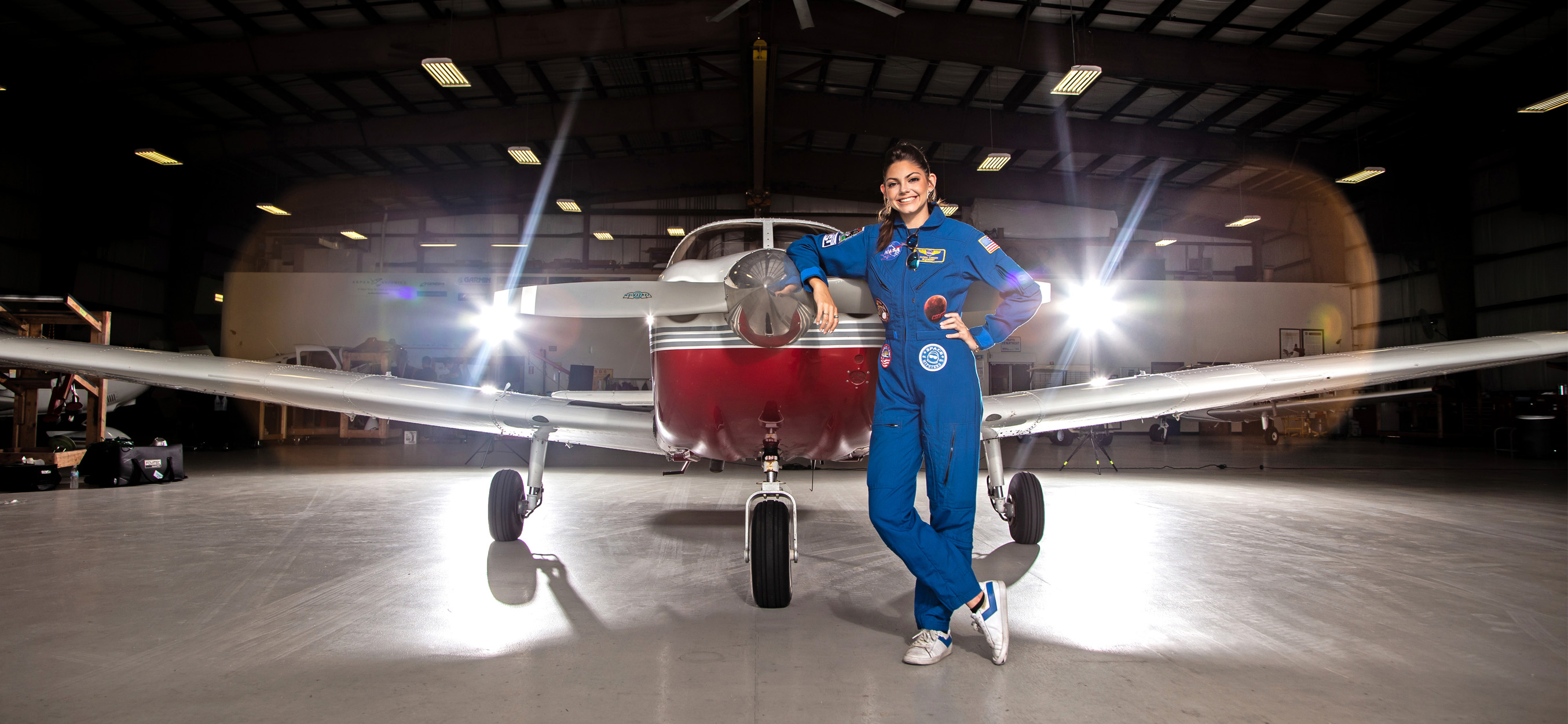
Stars in her eyes: Astronaut-in-training Alyssa Carson pursues a gravity-defying goal
On November 12, 1971, the eve of the Mariner 9 space probe’s entrance into Martian orbit, planetary science professor Bruce Murray hosted a seminar of thinkers to discuss the significance of the event. The panel included New York Times science editor Walter Sullivan, cosmologist Carl Sagan, and science fiction writers Arthur C. Clarke and Ray Bradbury, the latter of whom had published his collection of forward-thinking short stories, The Martian Chronicles, more than 20 years earlier. “What’s the use of looking at Mars through a telescope, sitting on panels, writing books,” Bradbury said to the audience, “if it isn’t to guarantee, not just the survival of mankind, but mankind surviving forever!”
Alyssa Carson, standing solo on TEDx stages in Greece, Romania and Austria—as well as in countless public engagements, panels, and interviews conducted in Spanish, French and Chinese—has echoed similar sentiments, but with a twist Bradbury would never have seen coming: Carson, this contemporary speaker for the stars, is only 19 years old, and has been heralding humans’ path to Mars since her childhood in the mid-to-late-aughts—a timeframe that sparked the beginning of the end for Bradbury’s fictional doomed colonists, but actually was the tip of the iceberg (or extraterrestrial supervolcano) for one of the world’s youngest astronauts-in-training.
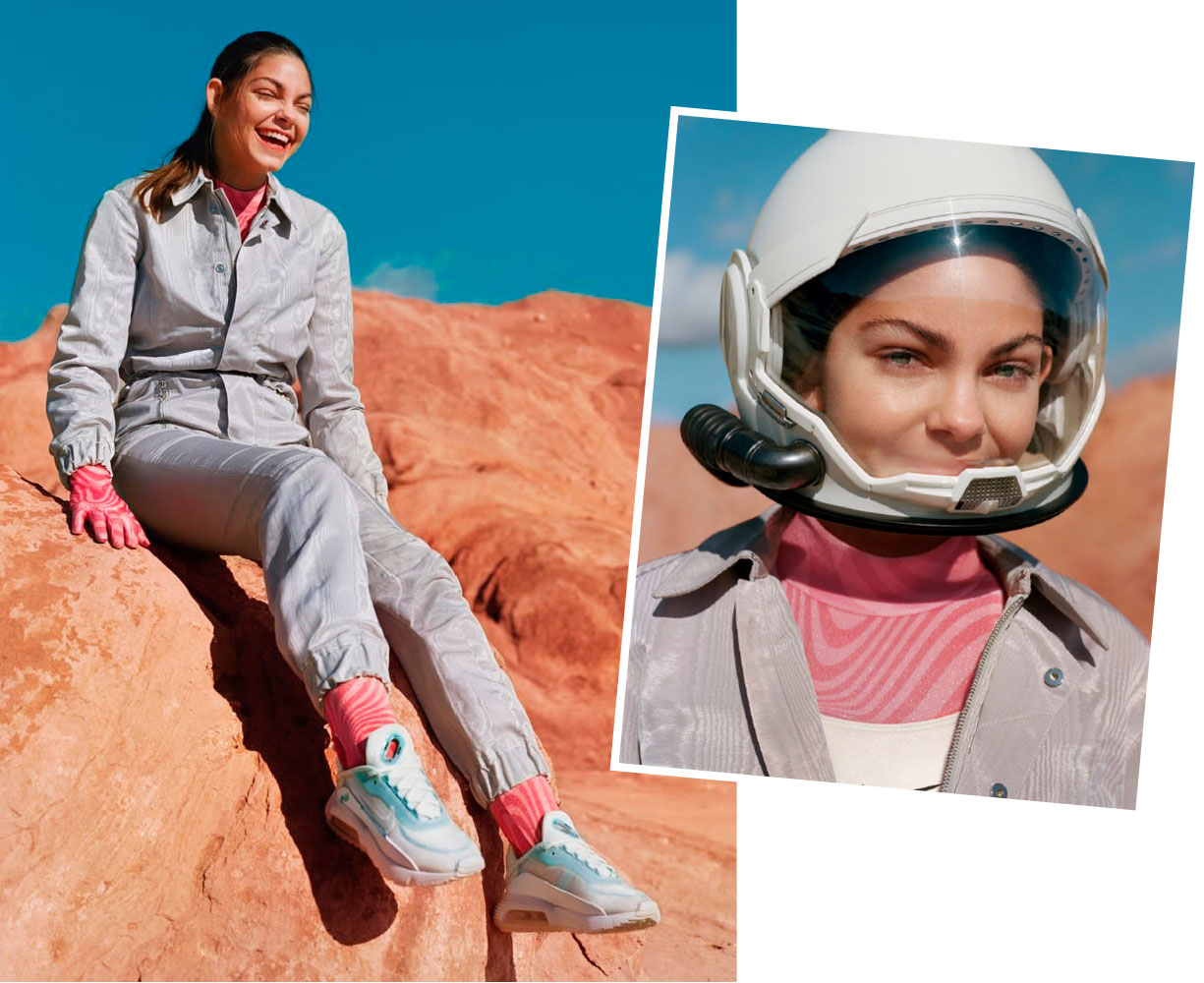
With so much already under her belt—four languages thanks to an education at the Baton Rouge International School, a pilot’s license, scuba certification, G-force and decompression training, microgravity flights, skydiving, a self-published book, and completion of all seven of NASA’s international space camps, among other accomplishments—the fact that Carson has only just entered her second year of college this fall reads as a refreshingly relatable checkpoint.
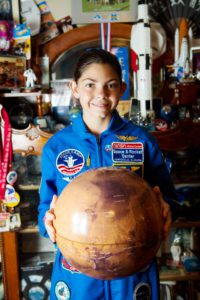
“College is something I’ve especially looked forward to, since I can officially take classes I feel are really meaningful and work toward something I’m interested in,” she explains during a late-summer interview from the Baton Rouge home she shares with her father, Bert. Shortly after our conversation, Carson travels back to the Florida Institute of Technology, a private university on America’s “Space Coast” near the Kennedy Space Center and Cape Canaveral Air Force Station, and home to the Aldrin Space Institute, a program created with the specific aim to advance space exploration and development toward a permanent human presence on Mars. And while anyone might use similar words to talk about pursuing their dreams through the college major of their choice, Carson’s choice is, shall we say, pretty stellar.
“Astrobiology is a difficult major to find,” says Carson. “It’s a huge field, though, so you can study anything from bacteria and plants in space to entire planets or entire solar systems.”
Despite her extensive training in the science and mechanics of space flight, which would be necessary tools in any astronaut’s arsenal, Carson’s research interests currently lie in extraterrestrial soils and plants—some of the most rapidly advancing and critical areas in astrobiology, particularly as they relate to the possibilities of future human settlement on the Red Planet, in which Carson hopes to play a role.
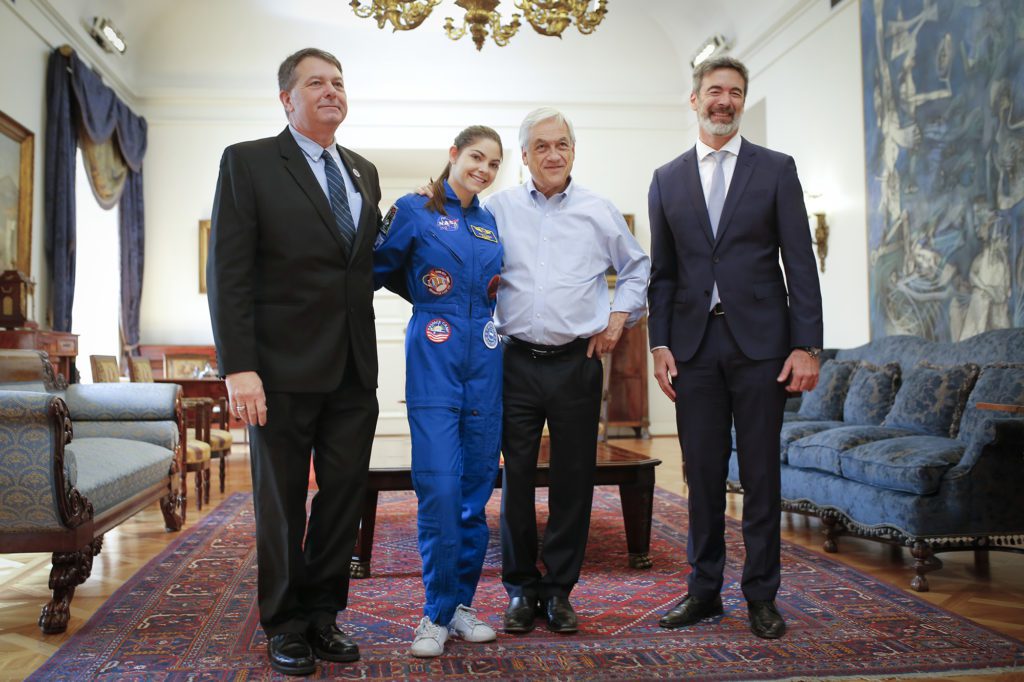
“Florida Tech specializes in a lot of Martian research,” says Carson. “There’s a lab where we try to simulate Martian conditions in a space about the size of a closet—basically a ‘Mars box’—where we try to recreate its atmosphere, its soil … just researching the possibilities of using and altering those things to see how we can use them in growing plants, for example.”
Her college work is only the latest research venture for Carson. Jason Reimuller, executive director of the Project PoSSUM aeronomy research and education program, a citizen science initiative where Carson began training for space conditions as a 15-year-old, knows firsthand the verve with which she approaches her studies.
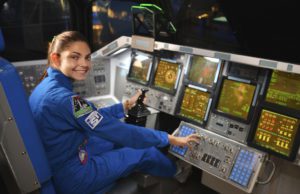
“Alyssa’s been in all of our citizen science campaigns, which is a feat in itself, since they’re pretty novel experiences,” he says. “One required going up to northern Canada to study noctilucent clouds, and Alyssa was right there with us—after a long flight and an 8-hour car ride—as the primary instrument tender. She’s also been trusted with NASA-funded instruments in high-altitude and hypoxic situations at 25,000 feet in a pressurized plane. It’s been great to see her interact with peers and professionals with such ease and responsibility.”
For Carson, the task of proving herself at such a young age is all in a day’s work. “There have been several times where, for example, if I meet an astronaut, I want them to know that I’m not just another kid saying I want to be like them,” she says. “I want them to realize that I’m working hard. I’ll try to throw out big words sometimes, or remind them that, yes, I do research campaigns, I do test Final Frontier equipment, and things like that. It’s a big thing, to be taken seriously.”
Not that someone who logs training hours experiencing parabolic flight in pressurized plane cabins can’t, well, feel the pressure. “There have been times in college where I’ve had to check myself and ask if I should be doing so many things at once,” Carson says. “College really pushes you, but it’s been exciting to do that and see how I’m developing and learning about myself in general.”
After all, Carson isn’t too far removed from the days when speaking engagements, homework, extracurriculars and socializing with friends all revolved in the same handful of hours after school. Leaving time for Khalid meet-and-greets, Post Malone playlists, and binge-watching Netflix’s Outer Banks is all part of the delicate scheme to keep teenagedom intact.
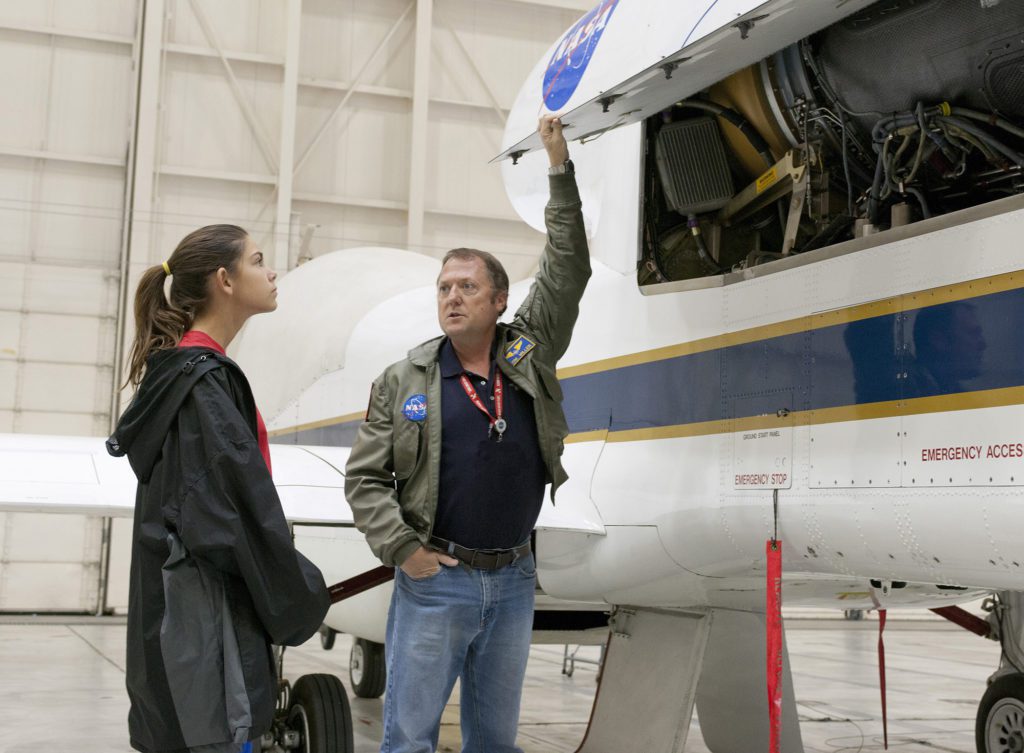
“My dad and I definitely wanted to make sure I had the same experience as everyone else,” she says. “For example, once I had a speech in north Louisiana on the same night as a school dance, four hours away. Afterward, my dad just sped down the road while I changed in the backseat, doing my makeup in the visor mirror. We went straight to my friend’s house and started taking pictures right away—it was still fun. I made sure not to miss anything I felt was too important.”
Pursuing a passion in the public eye, while never her initial goal, has nonetheless provided the opportunity to expand her social role in the sciences. “The reason I started speaking and doing more public events was really just because I saw, when the shuttle program ended, that there was a huge gap between what was really going on in the space industry and what the public had an understanding of,” she says. “People were acting like NASA was closed, or that there was no more need for astronauts, when that’s not true at all! So what started out as a way to document my own aspirations has become an awesome way to connect with and inspire other people who have the same dreams.”

If anything, Carson’s presence—whether in the sciences or on the stage in front of fellow starry-eyed hopefuls—is stronger than ever before. Masked and goggled in the university labs only 50 miles from the site where Mariner 9 first lifted off into the exosphere, Carson awaits the next rumble of Bradbury’s own Rocket Summer, when a liftoff to Mars leaves with the drumming of her contributions “beating into the night”—and perhaps with her place in the passenger seat.
“It’s been fascinating to watch Alyssa bond with established professionals and young peers like herself,” says Reimuller. “Her ambitions and messages are so important right now, and she’s definitely giving a face to the brighter future of humanity.”
Alyssa Carson isn’t the only south Louisiana woman with a passion for the space field. Read more about NASA Space Launch System quality engineer Renee Horton and former astronaut Serena Auñón-Chancellor.











